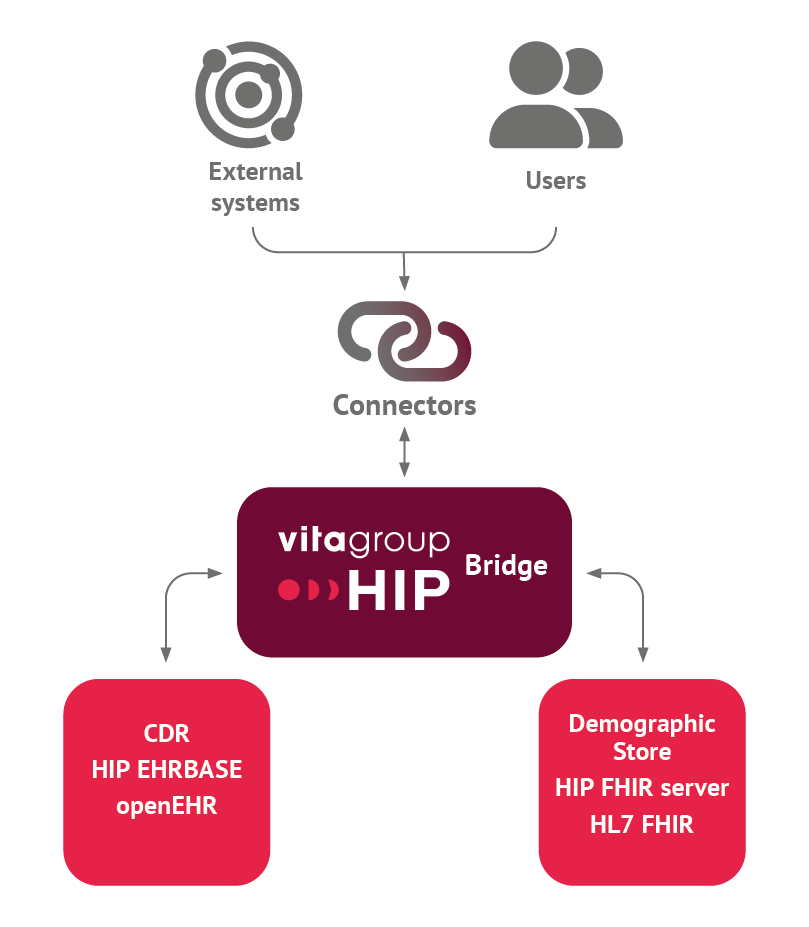Ressourcen / Tech Blog / Vendor neutral interoperability with openEHR and HL7 FHIR Part 1
Vendor neutral interoperability with openEHR and HL7 FHIR
Architecture of the HIP-Bridge
Series by Stefan Spiska, Senior Backend Developer, PEN, vitagroup HIP
In today’s healthcare landscape, providers often find their data scattered across multiple applications, many of which offer only a limited and fragmented view of patient information due to reliance on legacy data formats. This lack of interoperability is a considerable challenge to achieve efficient and safe patient treatment.
Open health data platforms, such as the Health Intelligence Platform (HIP), aim to bridge this gap by integrating and transforming medical data. By providing a vendor neutral, standardised, and semantically rich representation of patient data, these platforms enable seamless data integration and the development of health applications based on a standardized view of the data.
In this series of articles, we will explore the integration component of HIP – the HIP-Bridge. This component acts as a configurable facade, enabling integration with legacy systems while storing data in open, standardised formats such as openEHR and HL7 FHIR.
Part 1: Architecture of the HIP-Bridge
To ensure interoperability, data must be extracted from 3rd party applications like HIS(Hospital Information System) or LIS (Laboratory information systems), transformed into open, vendor-neutral formats, and stored within the Platform via the HIP-Bridge:

In HIP, non medical data is stored separately from medical data in a HL7 FHIR server. This separation enables fine grained access control, enhancing privacy and security.
Structured medical data is primarily stored in HIP EHRbase, following the openEHR standard. This ensures that all data is standardised using clinical information models, known as Archetypes and Templates.
The HIP-Bridge serves as the central integration point for reading and writing data, facilitating data transformation between different formats. Through connectors, it supports data exchange using multiple standard and legacy data formats, ensuring seamless integration with existing healthcare systems.
Note: HIP Bridge is backed by a powerful mapping framework, where the storage system of the data can be flexible defined. Therefore, medical data could also be stored in the FHIR Server, as well as non medical data can be stored in EHRbase.
